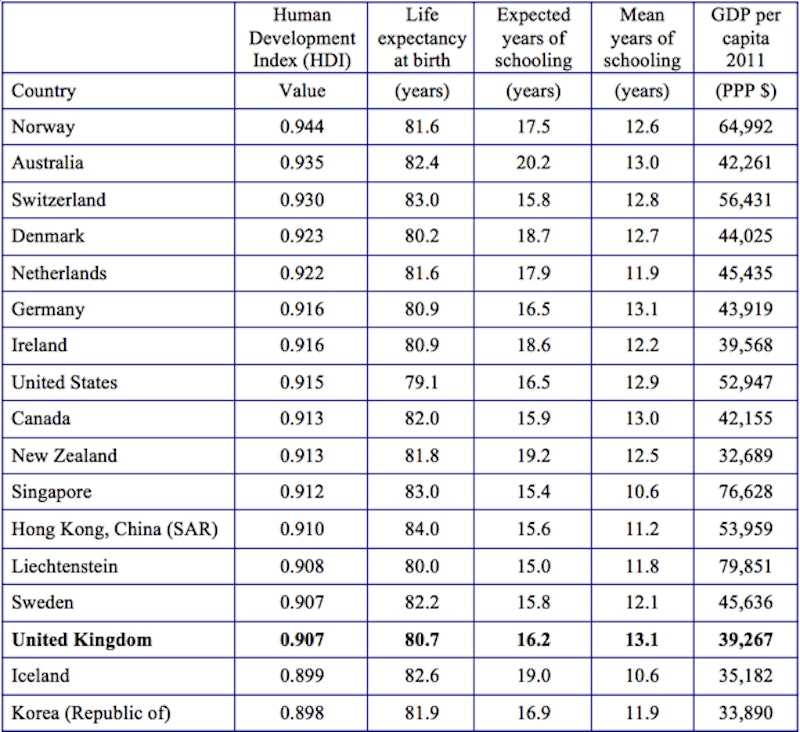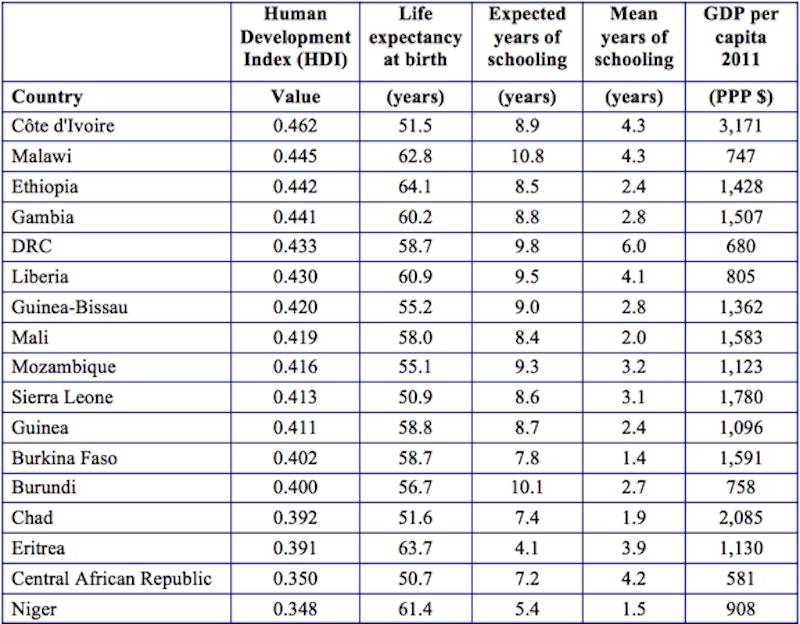Study Notes
Human Development Index (HDI)
- Level:
- A-Level
- Board:
- Edexcel, IB, Eduqas
Last updated 22 Mar 2021
How can we measure what progress a country is making in its economic development? Is GDP alone a suitable measure of development? The United Nations thinks not and, since 1990, it has published an alternative measure of economic development - the Human Development Index (shortened to HDI).
The United Nations Development Programme (UNDP) publishes the Human Development Index each year.
The key features to remember about the HDI are:
HDI focuses on three key measures of human development: longevity (how long people live), basic education and minimal income
The HDI tracks progress made by countries in improving these three basic development outcomes
The inclusion of education and health indicators is a sign of successful policies in providing access to merit goods such as health care, sanitation and education
The three measures in the index are:
1. Knowledge: First an educational component made up of two statistics – mean years of schooling and expected years of schooling
2. Long and healthy life: Second a life expectancy component is calculated using a minimum value for life expectancy of 25 years and maximum value of 85 years
3. A decent standard of living: The final element is gross national product (GNP per capita adjusted to purchasing power parity standard (PPP)
How Countries are Classified Using the HDI
The UNDP classifies each country into one of three development groups:
Countries with the Highest HDI
The data from the 2015 HDI showing the countries with the highest HDI is shown below:

Countries with the Lowest HDI
Not surprisingly, some of the poorest countries appear in the list of the lowest HDI:

Some Key Features of Changes in the HDI
The world average HDI rose to 0.68 in 2010 from 0.57 in 1990 The fastest progress has been in East Asia & the Pacific, followed by South Asia and Arab States. All but 3 of all countries have a higher level of human development today than in 1970 The exceptions are the Democratic Republic of the Congo, Zambia and Zimbabwe From 1970 to 2010 real per capita income in developed countries increased 2.3 per cent a year on average, compared with 1.5 per cent for developing countries Life expectancy at birth has increased due to lower infant and child mortality, fewer deaths due to HIV/AIDS and also better nutritionLimitations of the HDI
Any measure of economic development is bound to have its limitations and criticisms. For the HDI the following points are commonly made:
The standard HDI measure does not take into account qualitative factors, such as cultural identity and political freedoms (human security, gender opportunities and human rights for example)
- The GDP per capita figure – and consequently the HDI figure – takes no account of income distribution.
- If income is unevenly distributed, GNI per capita will be an inaccurate measure of people’s monetary well-being
- Purchasing power parity (PPP) values used to adjust GDP data change quickly and can be inaccurate or misleading
You might also like
Economic growth
Study Notes

Is the Global Economy About to Crash in 2016?
30th January 2016

Rebalancing: How China's Economy is Changing (or Not)
18th April 2016
Market Conditions
Study Notes
Economic Growth (GDP)
Topic Videos

Economic Environment | Is the UK Already in a Recession?
22nd September 2022